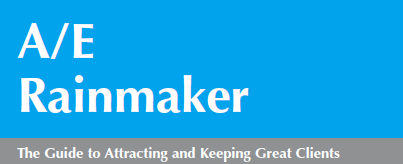by Dave Alexander, Lincoln Strategies, LLC
Your boss assembled a proposal writing team and you drew the short straw. You get to coax your colleagues into re‑writing their resumes for a federal proposal, for the umpteenth time.
Are you in charge of resumes for a federal proposal? You will need to wear several hats:
- Taskmaster. Convince your colleagues to customize their resumes and to get you drafts on time. And then convince them to respond to your comments, or provide you with the detailed information you will need to make the final changes.
- Storyteller. Each resume needs to tell a persuasive story of why this person has just the right set of skills, experience, and proven performance for this particular project. This goal cannot be achieved by using a person’s “standard resume,” or by re-using a resume that was used in a previous proposal.
- Diplomat. Some of the senior folks in your firm may believe that the mere presence of their resume in the proposal will ring up evaluation points. Your skill and tact will be tested as you explain that their resumes, too, have to be customized. Marquee value counts for little.
- Tapestry weaver. Your challenge: ensure that each resume resonates with and reinforces other parts of the proposal. For example, the “technical approach” section will mention certain methodological approaches and analytic tools that your firm will apply in meeting the client’s specific needs. Do the resumes clearly display relevant experience in applying these methods and tools?
- Quick change artist. You will need to keep abreast of changes in other parts of the proposal. The staffing plan will evolve. Key win themes may be radically altered.

Published in Vol. 5, No. 1 of A/E Rainmaker, a publication of PSMJ Resources, Inc.
On a fast-moving proposal, it’s easy to give in to the temptation to use a “cut-and-paste” approach, in which you borrow too heavily from resumes from previous proposals, or use standard resumes from a centralized corporate resume file. Here are six steps that you can take to get the job done right:
1. Examples. Under the pressure of a tight proposal deadline, you may feel compelled to send out a call for resumes as soon as possible. I always first write up at least two example resumes, tailored to the RFP, and attach these examples to the request for resumes. This delays sending out the request for resumes, but it gives your colleagues a much better understanding of what you are seeking from them.
2. Emphasis on content. When you are asking others in your firm to tailor their resumes to a particular RFP, you want them to focus their energies on figuring out how to best describe their skills, experience, and knowledge that are directly relevant to the RFP. Don’t slow down your colleagues by asking them to worry about fonts, margins, and so forth. (Like it or not, that will be your job.)
3. One-on-one conversations. Talk with each person whose resume will be included in the proposal—before they begin writing their first drafts. Help them understand how to pitch their experience and skills for this particular proposal. A 10-minute conversation will impart more information than a 10-page instruction note.
4. Mold breaking. Tailoring a resume effectively is different than merely editing and rearranging the material in a previous version. Tailoring includes looking for new material: projects, skill sets, and areas of knowledge that haven’t been included in prior versions of the same resume.
5. Details. Part of the job of tailoring a resume for a proposal is to add concrete—and sometimes minute—details. Talk often and in depth with your colleagues who are writing the “technical approach” and “understanding of the problem” chapters. This will help you figure out how to improve the resumes.
6. Persuasive summaries. The “summary of qualifications” section of a resume might be the only section that most members of the panel actually read. Give yourself plenty of time to write this section. This is your prime opportunity to “sell” the resume. Keep the summary brief, keep it on point—and make it compelling. You cannot achieve this by simply editing the same section from a previous version of this person’s resume.